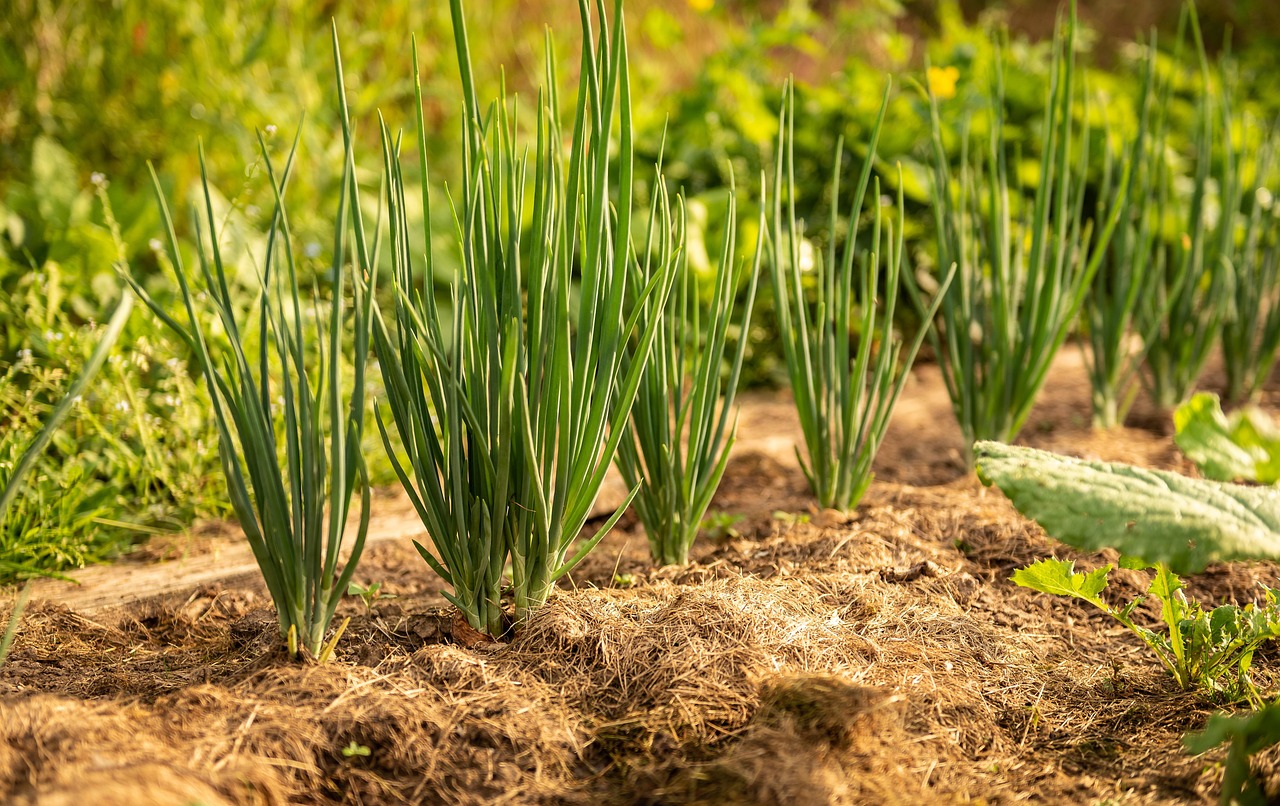If you’ve ever tasted an onion that’s rich, sweet, and perfectly crisp, chances are it was grown by someone who knew the secret — onions thrive when given a head start before spring even arrives. Overwintering onions might sound like a risky gardening gamble, but it’s actually a centuries-old method that produces larger, more flavorful bulbs than most spring-planted onions can match.
The idea is simple: plant them in the fall, protect them through the cold months, and watch them burst into growth as soon as winter loosens its grip. But how exactly do you pull it off without losing your crop to frost, rot, or hungry wildlife? Let’s walk through the process step-by-step so you can enjoy an early, bountiful harvest.

Why Overwinter Onions at All?
Why wait for spring when you can have onions growing quietly under the soil all winter? Overwintering allows onions to establish strong roots before the ground freezes. Once spring arrives, they’re ready to take off and grow faster than spring-planted sets.
Key benefits include:
- Earlier harvests — sometimes up to a month sooner than spring onions.
- Bigger bulbs — strong root systems mean more growth power.
- Sweeter flavor — winter’s slow growth reduces sharpness and boosts natural sugars.
- Better use of garden space — plant onions in the off-season while other beds rest.
Choosing the Right Onion Varieties for Overwintering
Not all onions can handle the chill. You’ll need varieties bred for winter hardiness and short-day or intermediate-day conditions.
Best Overwintering Onion Types
- ‘Senshu Yellow’ – Mild flavor, excellent winter hardiness.
- ‘Shakespeare’ – Firm bulbs with a good shelf life.
- ‘Radar’ – One of the most cold-tolerant varieties available.
- ‘Hi Keeper’ – Great for storage and strong flavor.
💡 Pro Tip: If you live in a mild winter area (zones 7–9), you have more flexibility. In colder regions (zones 3–6), stick to the toughest overwintering types and consider extra protection.
When to Plant Onions for Overwintering?
Timing is everything. Plant too early and your onions may grow too much top growth, making them vulnerable to frost damage. Plant too late and roots won’t have time to establish before the cold sets in.
General Planting Guidelines
- Mild climates: Mid to late October.
- Cold climates: Early to mid-September.
- Frost-prone regions: 6–8 weeks before your first hard frost date.
The goal? Get your onions settled with about 4–6 inches of top growth before winter truly bites.
Preparing Your Soil for Winter Success
Onions are picky about their soil, especially when they’re facing months of dormancy. A well-drained, nutrient-rich bed is non-negotiable.
Steps for Perfect Onion Soil
- Clear the bed – Remove weeds and leftover plants to prevent pests and diseases.
- Loosen the soil – Onions need a fluffy, crumbly texture for root growth.
- Add compost – A few inches of well-rotted compost will feed them slowly through the winter.
- Balance pH – Aim for a slightly acidic to neutral range (6.0–7.0).
Avoid fresh manure — it can cause rot in dormant onions.
Planting Your Onions for Overwintering
You can start with onion sets (small bulbs) or transplants. Sets are easier for beginners, but transplants often produce larger bulbs.
How to Plant Onion Sets
- Depth: 1 inch deep, pointy end up.
- Spacing: 4–6 inches between onions, 12 inches between rows.
- Watering: Water well after planting to settle the soil.
Using Onion Transplants
If starting from seed indoors, sow in late summer, then transplant when seedlings are about pencil-thick.
Protecting Onions Through Winter
Here’s where the “overwintering” part gets real. Your onions don’t need to grow much during the cold months — they just need to survive.
Mulching for Protection
- Apply mulch once the ground cools but before hard freezes.
- Use straw, shredded leaves, or pine needles to insulate the soil.
- Keep mulch 2–3 inches thick in mild climates and 4–6 inches in cold areas.
Wind & Frost Protection
In extremely cold regions, consider low tunnels or frost blankets for an added layer of defense.
Caring for Onions in Late Winter and Spring
When the days slowly lengthen, onions wake up. The goal now is to keep them well-fed and weed-free so they can channel all that energy into bulb growth.
Spring Care Checklist
- Remove heavy mulch gradually so onions can get sunlight.
- Fertilize lightly with a balanced, nitrogen-rich feed every 2–3 weeks.
- Keep soil moist but not waterlogged — onions hate standing water.
- Weed regularly to prevent competition for nutrients.
Common Overwintering Onion Problems (And How to Solve Them)
Even experienced gardeners hit a few snags. Here’s how to keep trouble at bay.
Frost Damage
- Solution: Mulch more deeply or use row covers.
Rotting Bulbs
- Solution: Ensure good drainage; avoid overwatering in late fall.
Pest Attacks
- Solution: Plant onions alongside garlic or chives to deter pests; use fine mesh netting if needed.
When and How to Harvest Overwintered Onions
Overwintered onions usually mature earlier than spring-planted ones — often by late May or early June.
Signs they’re ready:
- Tops begin to yellow and flop over.
- Bulbs feel firm and full-sized when gently squeezed.
Harvest Steps
- Loosen soil with a fork — don’t pull by the tops.
- Lay onions in a single layer to cure for 10–14 days in a dry, airy spot.
- Trim roots and tops before storing in a cool, dark place.
Storing Your Overwintered Onions
The reward for your patience is a stash of sweet, flavorful onions that last for months.
Best Storage Conditions:
- Temperature: 32–40°F (0–4°C)
- Humidity: 65–70%
- Ventilation: Excellent airflow to prevent mold
Avoid storing near potatoes — they give off moisture and gases that cause onions to spoil faster.
